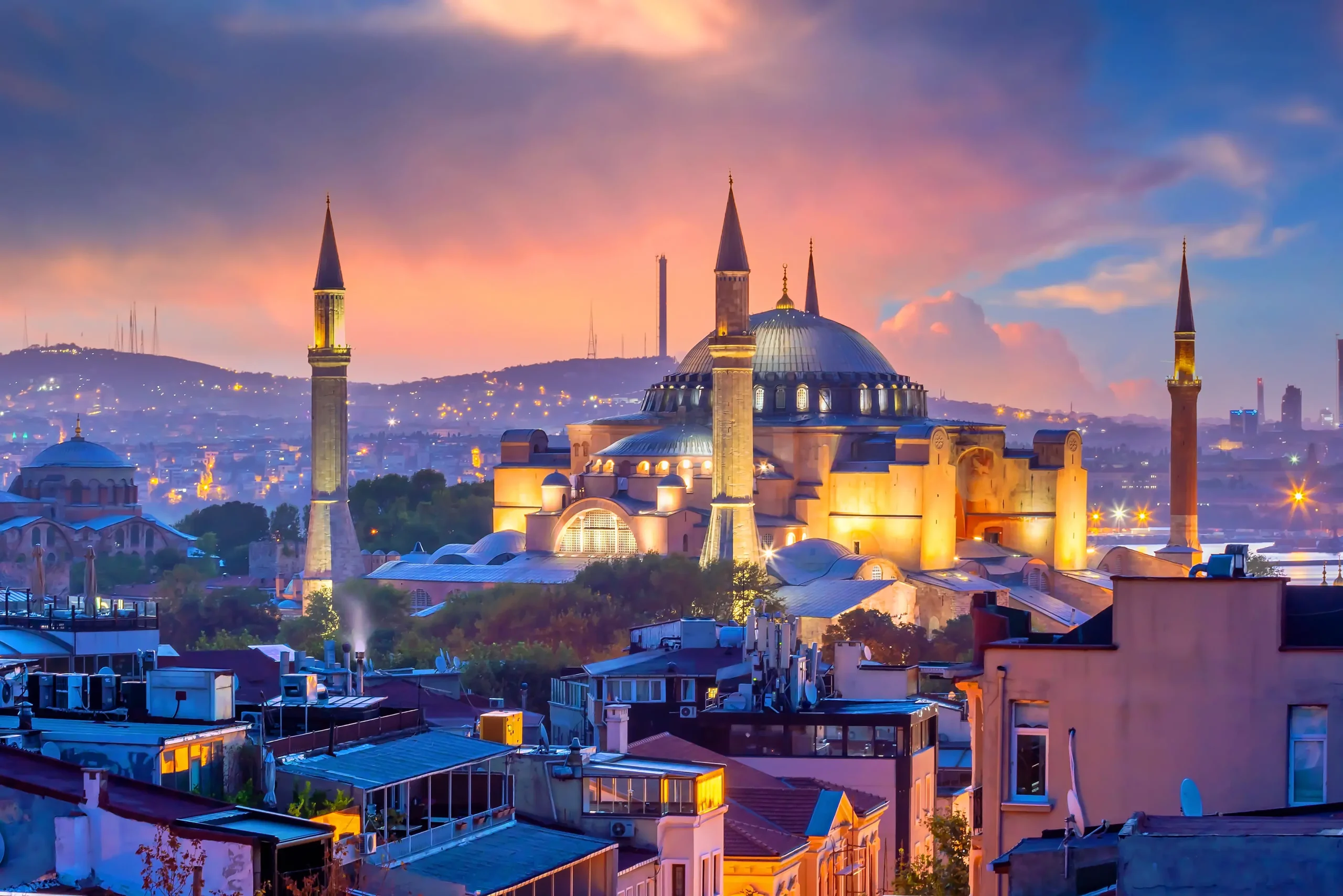justjlm.org – Hagia Sophia, located in Istanbul, Turkey, is a monumental structure that has stood the test of time, serving as a cathedral, mosque, and museum. Its rich history and architectural brilliance make it one of the most significant cultural and religious landmarks in the world.
Historical Background
Originally constructed in 537 AD during the reign of Byzantine Emperor Justinian I, Hagia Sophia was designed to be the cathedral of Constantinople. For nearly a thousand years, it was the largest cathedral in the world, symbolizing the wealth and power of the Byzantine Empire. In 1453, following the Ottoman conquest of Constantinople, it was converted into a mosque by Sultan Mehmed II, marking a new chapter in its storied history.
Architectural Marvel
Hagia Sophia’s architectural design is a masterpiece of Byzantine engineering. Its massive dome, measuring 31 meters in diameter, appears to float above a vast, open nave, an illusion achieved through innovative structural techniques. The interior is adorned with intricate mosaics, marble pillars, and ornate decorations, blending Christian iconography with Islamic art after its conversion into a mosque.
Cultural and Religious Significance
Hagia Sophia has played a pivotal role in both Christian and Islamic traditions. As a cathedral, it was the center of Orthodox Christianity and a symbol of Byzantine religious and political authority. As a mosque, it became an emblem of Ottoman imperial power and Islamic architecture. In 1935, the Turkish Republic transformed Hagia Sophia into a museum, reflecting its universal cultural significance.
Recent Developments
In recent years, Hagia Sophia has undergone another transformation. In 2020, it was reconverted into a mosque, a decision that sparked global discussions about its cultural and historical implications. Despite its current status as a mosque, Hagia Sophia remains open to visitors from around the world, allowing people of all backgrounds to appreciate its historical and architectural grandeur.
Conclusion
Hagia Sophia stands as a testament to the rich and complex history of Istanbul, bridging the cultural and religious divides of its past. Its architectural splendor and historical significance continue to captivate scholars, tourists, and worshippers alike. As a symbol of the enduring legacy of both Byzantine and Ottoman empires, Hagia Sophia remains a timeless icon of Turkey.
